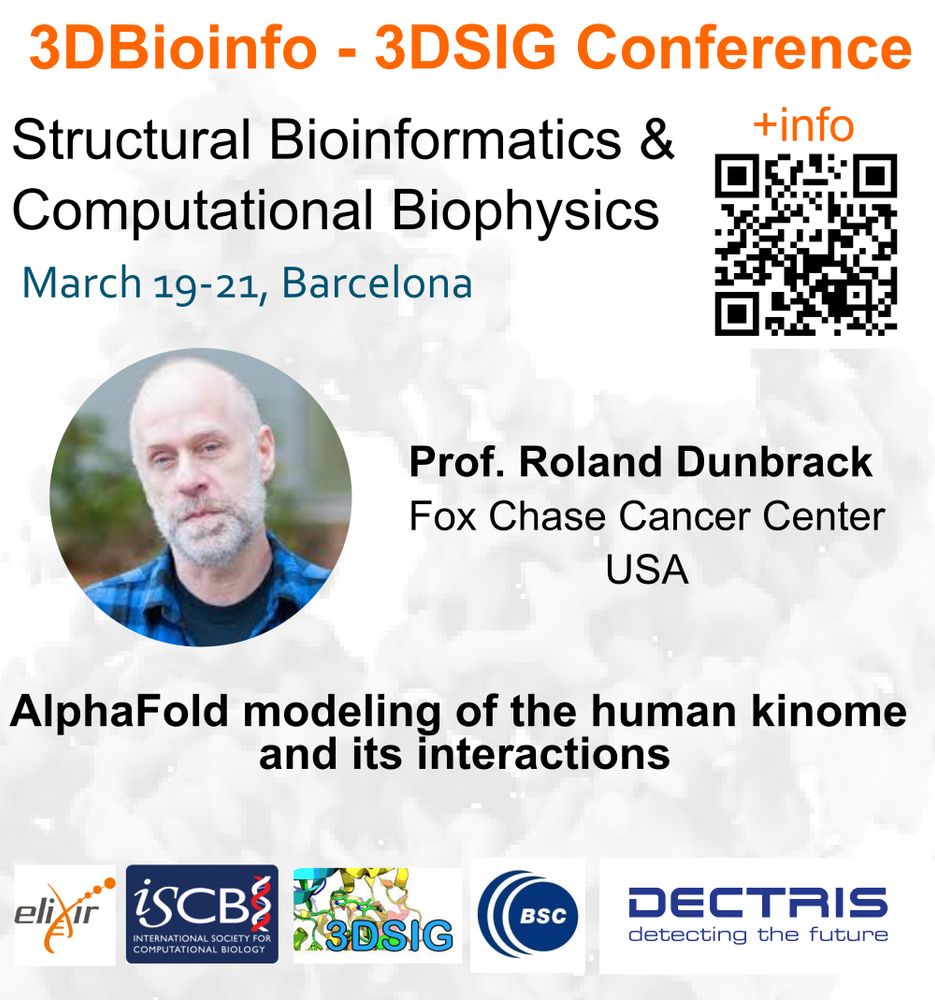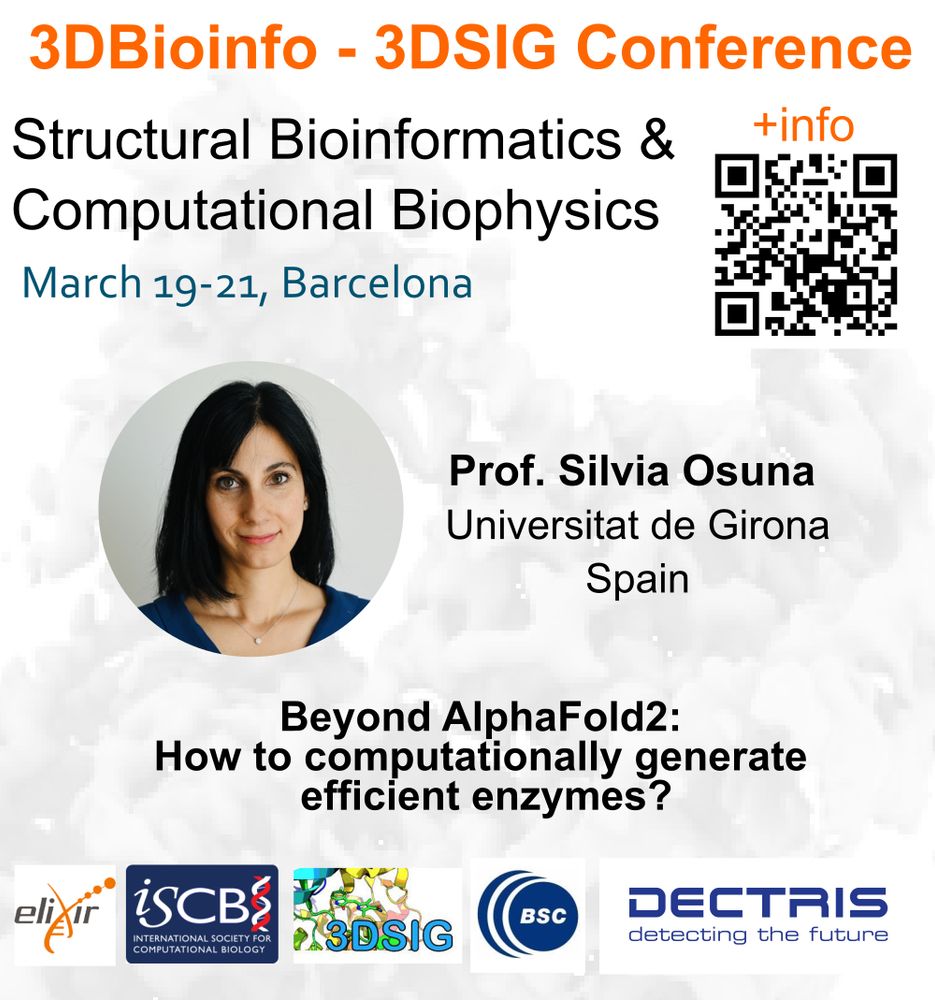Yep, that’s a cool idea. Should be quite easy to try actually
21.03.2025 17:21 — 👍 0 🔁 0 💬 0 📌 0Peter Škrinjar
@peterskrinjar.bsky.social
PhD student at @biozentrum.bsky.social. I prefer protein interactions to human ones.
@peterskrinjar.bsky.social
PhD student at @biozentrum.bsky.social. I prefer protein interactions to human ones.
Yep, that’s a cool idea. Should be quite easy to try actually
21.03.2025 17:21 — 👍 0 🔁 0 💬 0 📌 0
Afaik, not really. Recycling is done before diffusion module and the final output coords are not used for a refinement. Someone correct me if I am wrong though. But seems top method in this challenge could done smth like that: polarishub.io/competitions...
21.03.2025 12:49 — 👍 2 🔁 0 💬 1 📌 0
Open Postdoc Position at the schwede lab, Biozentrum Basel.
🧪🧬🔬 Postdoc in Computational Structural Biology at the @biozentrum.unibas.ch & @sib.swiss in Basel, Switzerland.
www.biozentrum.unibas.ch/open-positio...
The position is initially funded for 3 years, possibility to start immediately.
#StructurePrediction, #Bioinformatics, #Uniprot3D, #AI
In case you missed it!
24.02.2025 16:42 — 👍 12 🔁 3 💬 0 📌 0Some very cool stuff from the group now in paper form:
“ModelArchive: a deposition database for computational macromolecular structural models”
doi.org/10.1016/j.jm...
And
“Comparing macromolecular complexes - a fully automated benchmarking suite” doi.org/10.21203/rs.... (under review)
Join us tomorrow to hear @peterskrinjar.bsky.social talk about 🌹 Runs N' Poses 🌹! Curious to hear your thoughts on how to keep up with benchmarking in this field.
20.02.2025 12:34 — 👍 13 🔁 4 💬 0 📌 0

RT please: Just 1.5 months away from our joint 3DBioinfo/3DSIG amazing conference!
These are our two great keynote speakers!
@rolanddunbrack.bsky.social & @silviaosuna.bsky.social!
Check our preliminary programme here:
www.iscb.org/3dbioinfo202...
Registration link:
www.iscb.org/3dbioinfo202...

We’re hosting @peterskrinjar.bsky.social for a webinar to discuss his latest paper “Have protein co-folding methods moved beyond memorization?”!
Join live on Feb 21st at 11 AM ET. Register here: us06web.zoom.us/webinar/regi...
Explore Runs N’ Poses on Polaris today: polarishub.io/benchmarks/p...
How long does it take to predict ligand binding sites for all 220k proteins in the PDB? P2Rank 2.5 does it in 3 hours on a single CPU (16-core amd 5950x)—2x faster than the previous version 🚀.
(1/n)
That being said, today I looked at the templates that AF3 used and actually none of the predictions used ground-truth template or templates after the training cutoff, so was a false alarm luckily. Would still be interesting to check why some predictions improved in the lowest bins.
12.02.2025 13:40 — 👍 2 🔁 0 💬 1 📌 0It's not expected AF3 models would have perfect fidelity when run with ground-truth templates, especially cause it uses multiple templates and also MSA features. Additionally, only protein part is used from the templates, not the ligand information.
12.02.2025 13:39 — 👍 3 🔁 0 💬 1 📌 0We re-ran AF3 without templates, since we noticed it could use any template in the PDB, including the ground truth. We see the performance drops slightly in the lowest bins, but the gap to other methods still exists. We will update the preprint shortly!
11.02.2025 17:25 — 👍 20 🔁 5 💬 1 📌 0We’re extremely excited to host Runs N’ Poses on Polaris!
The authors show how current co-folding methods struggle to generalize beyond ligand poses in their training data.
Explore the benchmark: polarishub.io/benchmarks/p...
Explore the dataset: polarishub.io/datasets/pli...
New leaderboard on @polarishub.io for Runs 'N Poses! 🎸
Anyone has any protein-ligand co-folding methods laying around they would like to put to the test?
polarishub.io/benchmarks/p...
Great work @peterskrinjar.bsky.social @jeeberhardt.bsky.social @torstenschwede.bsky.social @ninjani.bsky.social
Have #AI methods for protein-ligand co-folding moved beyond memorisation and predict really novel leads for #drugdiscovery? Or do we find “more of the same”? This new benchmark lets you find out… ⬇️⬇️⬇️
08.02.2025 10:53 — 👍 19 🔁 3 💬 0 📌 0Basically, novelty is not defined by time in the PDB.
08.02.2025 10:38 — 👍 11 🔁 3 💬 0 📌 0We’ve been benchmarking deep learning co-folding methods for protein-ligand complex prediction, leading to the creation of 🌹Runs N’ Poses🌹. Great effort by @peterskrinjar.bsky.social and @jeeberhardt.bsky.social putting this together so quickly. Please have a look, excited for community feedback!
08.02.2025 10:30 — 👍 25 🔁 10 💬 0 📌 0
I want to thank my co-authors @jeeberhardt.bsky.social, @torstenschwede.bsky.social, @ninjani.bsky.social and all of our collaborators! RunsN’ Poses builds on PLINDER and OpenStructure—this work wouldn’t be possible without them!
Also thanks to @rokbreznikar.bsky.social for this amazing logo! 9/9

We’re pre-printing this early to get feedback from the community. We teamed up with @caswognum.nl at @polarishub.io to make the dataset and benchmark ML-ready polarishub.io/datasets/pli.... See also our github.com/plinder-org/... for more. Would love to hear your thoughts! (8/n
08.02.2025 10:20 — 👍 15 🔁 2 💬 1 📌 1
Our findings highlight the need for specialised benchmarks for deep learning in protein-ligand interaction prediction. As tasks like co-folding grow more complex, new metrics are needed to assess leakage and difficulty-best defined by interaction similarity, not protein or ligand similarity. (7/n)
08.02.2025 10:14 — 👍 10 🔁 0 💬 1 📌 0
To separate pose prediction from ranking, we analyzed all 25 models per method. Top-ranked models (black) outperform the worst (red) but still lag behind the best possible (blue). Success rates still correlate with training similarity, highlighting a key limitation of these methods. (6/n)
08.02.2025 10:12 — 👍 8 🔁 0 💬 1 📌 0
The largest cluster has 171 SARS-CoV-2 MPro X-ray structures with different small molecules. Despite explicit chirality in the input, all methods misoriented the 5-chlorobenzofuran-3-aminomethyl group, perhaps mimicking the 5-chloro-2-methoxyphenyl group from the closest training system. (5/n)
08.02.2025 10:11 — 👍 8 🔁 0 💬 1 📌 0
To ensure the observed trend is not driven by an over-representation of certain protein families, we also analyzed only cluster representatives to account for potential biases. The observed correlation doesn’t change. (4/n)
08.02.2025 10:09 — 👍 8 🔁 0 💬 1 📌 0
Interestingly, we found that ligands with abundant data in PDB, like cofactors, show better prediction performance. When excluding them to focus on drug-like ligands, the correlation between success rate and training similarity becomes even more linear. (3/n)
08.02.2025 10:08 — 👍 10 🔁 0 💬 1 📌 0
In this work, we explored how training data similarity impacts protein-ligand prediction accuracy—an overlooked aspect in recent benchmarks. Our analysis shows that the current co-folding methods struggle to generalize beyond ligand poses in their training data.(2/n)
08.02.2025 10:06 — 👍 21 🔁 4 💬 1 📌 3
Excited to share our latest preprint evaluating AlphaFold3, Boltz-1, Chai-1 and Protenix for predicting protein-ligand interactions, featuring our newly introduced benchmark dataset 🌹Runs N’ Poses🌹!
www.biorxiv.org/content/10.1...
🧵👇 (1/n)

Re docking: @workshopmlsb.bsky.social has been piloting a leaderboard for the PLINDER benchmark. It would be awesome to get submissions using existing methods, then everyone can see comparisons better 😁
leaderboard & instructions are on mlsb.io

We actually had a similar benchmark (with LDDT-PLI) in the same CASP15 issue a while ago (onlinelibrary.wiley.com/doi/10.1002/..., Fig3B) conclusions were (1) pocket detection needed for physics-based (2) DL models overfit (3) nothing performs on non "re-docking". Was my main inspiration for PLINDER
09.12.2024 20:31 — 👍 5 🔁 3 💬 1 📌 0
AF3 BEST METHOD followed by cluspro but also some conversion errors
03.12.2024 17:07 — 👍 22 🔁 10 💬 2 📌 2

@jeeberhardt.bsky.social presenting CASP16 PLI baselines. Big shout out to @jeremywohlwend.bsky.social and @gcorso.bsky.social for helping us with running Boltz-1 on short notice! Pretty weird results on autotaxin.
03.12.2024 17:17 — 👍 8 🔁 3 💬 0 📌 0